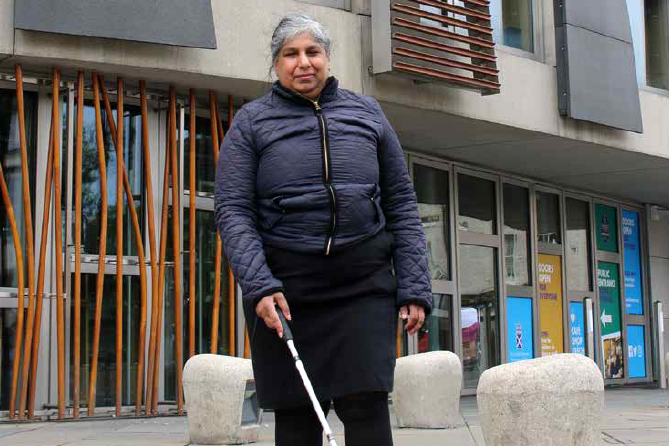New cervical screening standards urge better support for women with sight loss

Kirin: whose feedback was included in shaping cervical screening standards
The distressing cervical screening experiences of women with sight loss have been used to help shape new standards to improve how procedures are carried out in future.
Healthcare Improvement Scotland worked with the Royal National Institute for the Blind (RNIB) to ensure the views of blind and partially sighted women who’d undergone cervical screening were included.
As a result of the women’s feedback, which included being in pain and feeling unsupported, Healthcare Improvement Scotland has published new standards to improve cervical screening care.
Their feedback will help ensure the standards will meet the needs of everyone who uses the services, now and in future.
Standards set out a blueprint for what good care looks like and include ensuring healthcare professionals are trained to support women to make informed choices and receive accessible information about screening. Standards set out the levels of service performance that the public should expect from health services.
Amongst the testimonies that Healthcare Improvement Scotland heard included the cervical screening experience of Kirin from Edinburgh, who is registered blind.
She said: “I only went once and it went disastrously wrong. It was very painful and I didn’t know what was going to happen, or when it was going to happen.
“The nurse took no time to explain what was going to happen or what the procedure entailed. Having to position myself on the table with no sight was incredibly difficult. I have not and will not go back.”
It is of the utmost importance that everyone can attend these potentially life-saving screenings with dignity and all the support they need.”
Healthcare Improvement Scotland Director of Evidence and Digital
Around six women in Scotland are diagnosed with cervical cancer each week, and screening plays a key role in prevention.
Screening is offered to all people with a cervix in Scotland from age 25 to 64 and aims to detect changes in cervical cells before they develop into cervical cancer.
The RNIB Scotland says more than 100,000 blind and partially sighted women in Scotland face a range of barriers in accessing cervical screening.
Gillian Hallard, NHS Engagement Manager, RNIB Scotland said: “When services are inaccessible, trust is broken, and people are pushed away from the very care meant to protect them. Ensuring screenings are person-centred and accessible isn’t just about compliance, it’s about saving lives.
“We are especially pleased to see the standards reflecting the need for staff undertaking cervical screening to be compassionate and ensure women feel supported.”
To read the standards: https://www.healthcareimprovementscotland.scot/publications/cervical-screening-standards/
